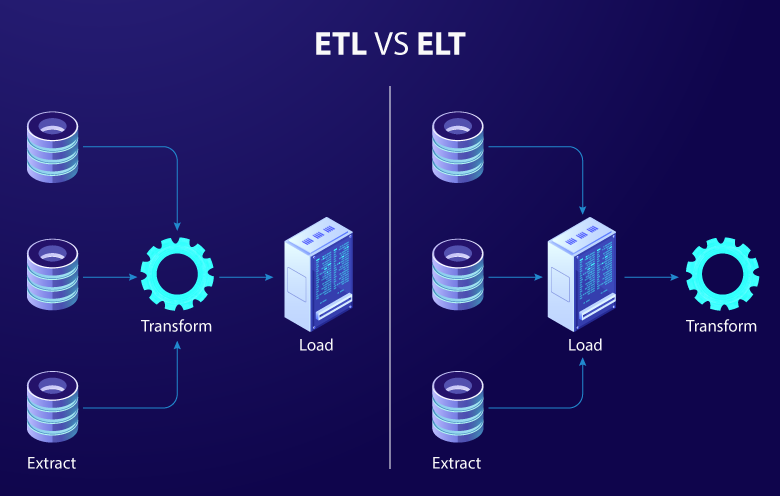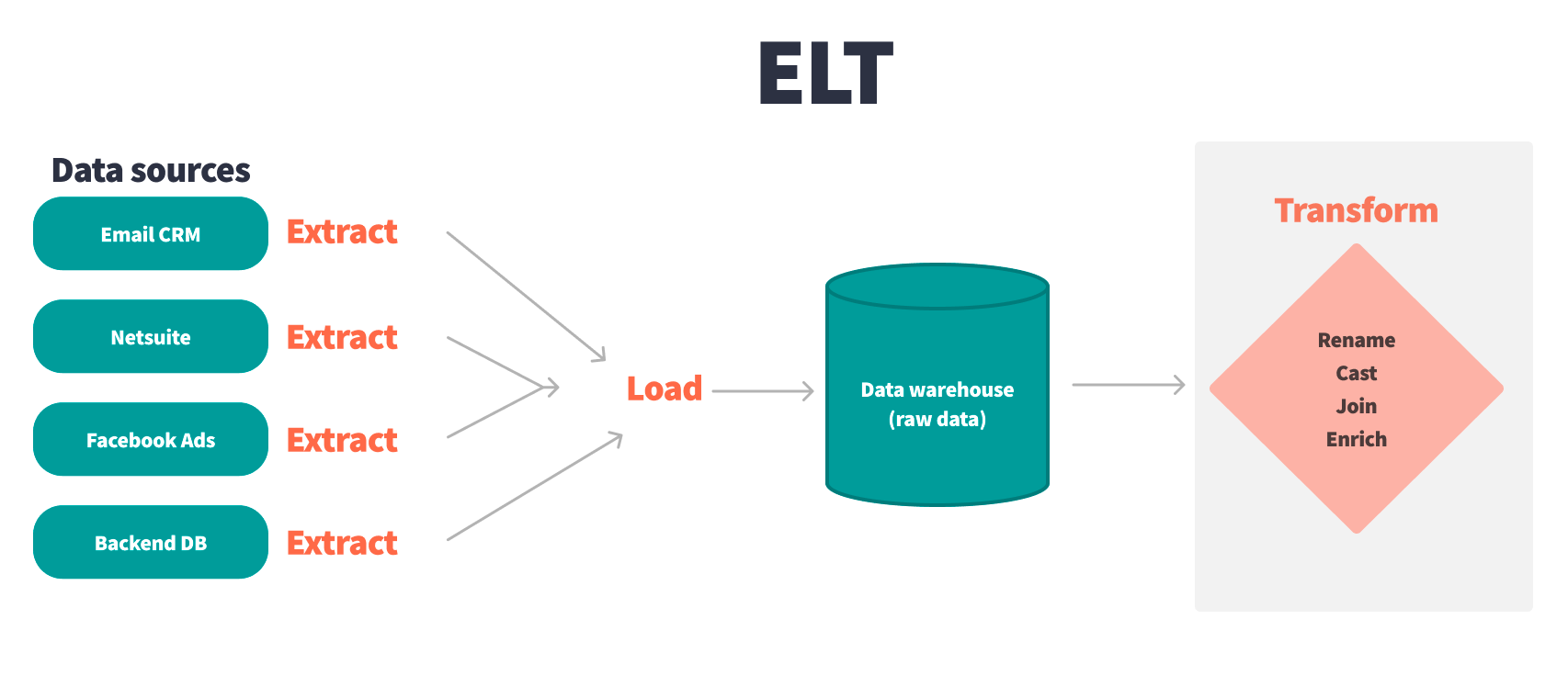In the realm of data integration, two primary processes dominate: ETL (Extract, Transform, Load) and ELT (Extract, Load, Transform). Both are crucial for preparing data for analysis, but they operate differently and are suited to different scenarios.
Understanding the differences between ETL and ELT is key to choosing the right approach for your data needs.

ETL: Extract, Transform, Load
ETL is a traditional data integration process that has been widely used for decades. In this process, data is first extracted from various sources, transformed into a suitable format, and then loaded into a data warehouse or data repository.
Here's a closer look at each step:
- Extract: Data is extracted from multiple sources, including databases, files, APIs, and more. This step involves gathering raw data in its original form.
- Transform: Extracted data is then transformed to fit the target system’s requirements. This includes data cleaning, normalization, aggregation, and applying business rules. - Transformation ensures that data is accurate, consistent, and ready for analysis.
- Load: The transformed data is finally loaded into a data warehouse or data repository where it can be accessed for analysis and reporting.
 ETL is particularly useful when dealing with structured data and when the transformation logic is complex or requires significant processing power. It is ideal for scenarios where data needs to be cleaned and processed before being stored, ensuring high data quality and consistency.
ETL is particularly useful when dealing with structured data and when the transformation logic is complex or requires significant processing power. It is ideal for scenarios where data needs to be cleaned and processed before being stored, ensuring high data quality and consistency.
ELT: Extract, Load, Transform
ELT is a more modern approach that leverages the power of modern data processing engines. In ELT, data is first extracted and loaded into the target system, and the transformation is performed afterward.
Here’s how it works:
- Extract: Similar to ETL, data is extracted from various sources in its raw form.
- Load: The extracted data is immediately loaded into the target system, such as a data lake or a cloud-based data warehouse.
- Transform: Once the data is loaded, transformations are performed within the target system using its processing power. This includes data cleaning, transformation, and enrichment.

ELT takes advantage of the scalability and processing power of modern data platforms. It is particularly useful for handling large volumes of unstructured or semi-structured data, as it allows for flexible and on-demand data transformation.
Key Differences Between ETL and ELT
- Processing Location: In ETL, data transformation occurs before loading, typically on a dedicated ETL server. In ELT, transformation happens after loading, within the target system.
- Performance: ELT can leverage the processing power of modern data platforms, making it more suitable for handling large volumes of data and complex transformations. ETL may be slower for large datasets due to the need to process data before loading.
- Flexibility: ELT provides more flexibility as transformations can be applied on-demand and adjusted based on changing business needs. ETL is less flexible as transformation logic is predefined and may require significant effort to change.
- Cost: ELT can be more cost-effective, especially when using cloud-based platforms that offer scalable storage and processing. ETL may involve higher costs due to the need for dedicated ETL tools and infrastructure.
- Use Cases: ETL is ideal for structured data and scenarios where data quality and consistency are critical before loading. ELT is better suited for unstructured or semi-structured data, real-time analytics, and environments with scalable processing capabilities.
Conclusion
Both ETL and ELT have their strengths and are suited to different scenarios. ETL remains a reliable choice for traditional data warehousing and structured data integration, ensuring high data quality and consistency. ELT, on the other hand, offers greater flexibility and scalability, making it ideal for modern data platforms and real-time analytics. Understanding the differences between these approaches allows organizations to choose the right method for their data integration needs, ensuring efficient and effective data processing.





Blog liked successfully
Post Your Comment
Rahul Shukla
Thanks for this!!